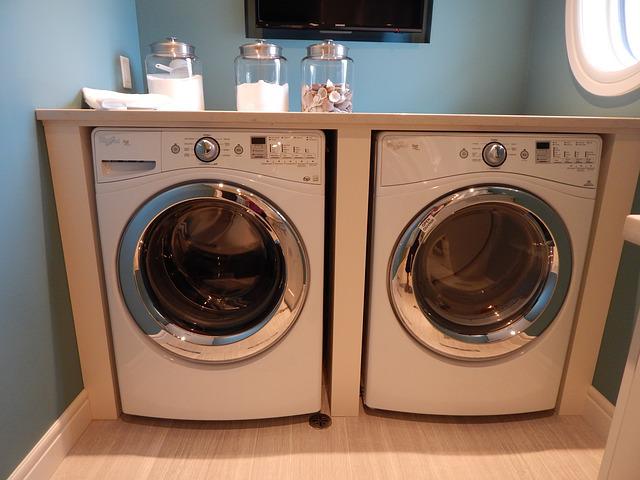We may all understand the function of the washing machine. However, not everyone knows how to care for it. A washing machine or a high-efficiency front-loading washer provides numerous benefits and reduces our workload. In addition, how you load the washing machine may seem insignificant, but it seriously influences how clean your clothes and linens come out of the washer.
Investing in a high-efficiency machine to do one of the most labor-intensive household tasks is worthwhile. Because front-loading washers are ergonomic, use less water and energy, and wash clothes more gently. However, following a few basic precautions is vital to protect your front-loading washer, clothes, and washing time. This post will assist you in learning how to save your front-loading washer from repair.
7 Simple Steps for Saving a Front Load Washer
Most people would be better off with a front-loading washer if it fits in their home than a top-loader. Compared to newer, high-efficiency top-loaders, front-loaders are easier to clean and use less water and energy to get rid of tough stains. In addition, some customers like buying brand-new equipment because replacement components and repairs can be expensive. Therefore, it is essential to comprehend and put into practice some fundamental steps to care for the front-loading washer and prolong its use.
1. Use Appropriate Detergents
The quantity and application of detergent are critical. Therefore, high-efficiency machines require using the proper detergent to prevent a future malfunction that may lead to repair. A homeowner should also know that high-efficiency washers consume less water than conventional washers. Therefore, choose a matching brand or label for your front-load washer. In addition, try to avoid using liquid fabric softeners to avoid the growth of mold and mildew. If needed, one teaspoon will soften a whole load.
2. Prevent the Mold Growth
Your front-loading washing machine can have mold and grow if not taken care of quickly. Since it only requires a low amount of water, particles from dirty clothes, powder, or softeners that did not entirely rinse may develop mold. In addition, mold can grow faster without your notice, which may lead to a severe repair or purchase of a new one. To prevent mold growth, never leave wet clothes inside the machine for a long time to prevent mold growth. You may leave the machine’s door if not used to allow the inside to dry out and circulate air. Also, remember to rinse and dry the interior surfaces of the door and seal it after each wash cycle. All these and more will help you avoid the mold problem with your washer.
3. Maintain the Correct Loading Cycle
Before loading your washing machine, read the directions carefully. For example, using the correct amount of detergent, washcloths, and water is essential. Proper machine usage can prevent severe damage to the machine and the fabric. Also, if available, ensure to use the detergent dispenser on most front-loading washing machines to avoid excessive suds and fabric softener.
Never put too many clothes in a front-load washer. For example, even if advertisements show a larger capacity, don’t be tempted to wash a heavy king-size comforter in a front-loading machine. However, the seals and bearings in the spin basket may wear out faster despite the washer’s ability to handle the load. In addition, overloading can cause jammed into the drum. Additionally, a vast load can strain your machine’s bearings, leading to an early appliance failure. Therefore, always maintain the correct loading cycle.
4. Use the Right Speed for the Spin
Make sure the spin speed you choose is suitable for the number of clothes you are washing. Faster spin speeds may tear the clothes and damage the machine. In addition, the spin cycle, which follows the wash, is to get rid of as much extra water as possible. So, the difference between wet laundry and less damp laundry is the cycle speed. Remember, these impact drying time on a clothesline and in a tumble dryer.
Furthermore, RPM measures spin speed (RPM). Higher spin RPM on a washing machine means faster drum rotation and cleaner clothing. However, 1400 spin speed washing machines are the most prevalent, while the lowest washer RPM is 400. High-speed spinning can damage silk fabric, causing it to rip easily. Cotton, wool, and denim can endure 1400 or 1800 to squeeze dry thoroughly.
Hardware: Simple Ways to Save Front Load Washer
5. Rubber Seal Cleaning
Using a solution of half water and half vinegar, clean the rubber seal on the washer door well and often. Remove any bits of hair or fabric you find because they can trap smells and sludge and develop mold. Use this solution to wipe the inside of the drum as well.
Cleaning the door seal gasket from dirt and dust from the laundry is essential. Sticky detergents will make it harder to open and close the door, and the seal will lose shape, leak, or break. It’s also more likely to be a place where mold and mildew grow. Finally, check the door seal often and ensure it fits tightly against the machine. If you see cracks, tears, or an error code, you should call a repair service to have it replaced.
6. Keep the Drain Pump Filter Clean
If your front-loading washing machine is vibrating, taking longer to complete a wash cycle, stopping and pausing frequently, or the door stays locked after washing, these are all signs that something is wrong. To prolong the life of an appliance, conduct essential maintenance.
Cleaning the drain pump filter is a mandatory maintenance operation. The drain pump filter can become clogged with hair fabric or small items resulting in slow water drainage. Check the drain pump filter and ensure to diagnose at least once a month or observe problems while doing your laundry.
7. Keep an Eye on the Hoses
To ensure that water flows smoothly into and out of your machine, you should regularly monitor the machine’s hoses. Ensure that the water supply is connected correctly and that there are no leaks or cracks. You may opt for stainless steel braided hoses. There is an additional cost, but they are more durable and less prone to splitting open. Hoses that are long-lasting lessen the risk of leaks and water disasters.
When Issues Arise, Here’s What to Do
You can avoid costly repairs by taking care of your washer and dryer before and after each use. To keep your Front load washer running efficiently, always take time to check and observe the machine.
A repair professional may be necessary if you continue encountering Washer Error Codes after following all the directions and regularly cleaning your machine. Call your trusted repairman to choose the best course of action for your specific circumstance. Even if you cannot fix the problem yourself, the service technician can identify the problem more quickly if you write down any error codes or symptoms.
Bonus: What to Keep in Mind Before Purchasing a Front Load Washer?
In Europe and Asia, front-load washers have been the norm for a long time. Of course, they have been used in commercial washers in the United States for years, but the recent focus on saving water and energy has put them at the top of the list for home washers. So, before purchasing one, here are the bonus tips to keep in mind.
- As laundry technology has improved and both designs can be large, small, or high-efficiency, there is more difference in pricing. Set a budget before you start shopping. It can help you focus on size and extra features.
- See what you can find in your living space. Particular residences are more suited to a specific washing machine model. For example, check the front swinging door. Is stacking your washer and dryer necessary? These elements influence your final decision.
- Check the accessibility. You may have to bend over to reach the door for front-loading machines. A squatting option is available on front-loading models. It is crucial to think about this factor to avoid any issues.
- Consider checking how much it will save energy. Front-loaders use the least amount of water and energy and clean the best. Most of them have water heaters built right in.
- When investing in a front-loading washer, it is crucial to look into the materials utilized. The tub may be made from plastic, porcelain enamel, or stainless steel. Plastic containers withstand chipping and corrosion better than enamel containers. Steel containers are superior because they are the most durable and can withstand high spin rates.
- Consider additional key factors that may influence your way of living. For example, sound dampening is one of the most significant characteristics to seek if you dislike noisy equipment. In addition, soundproof washing machines are available, which are great for those who place their washers in the kitchen or bedroom.
Most Reviewed
Front-loading washers have a stackable design that makes it simple to load and unload your clothing while saving space. Additionally, front-loading versions are known for using less water and gently cleaning your garments. The best front-load washers on the market are based on their use, effectiveness, accessibility, and unique features.
Bottom Line
Use it with caution! Even if your Front load washer has a large capacity and a strong motor, it can still break down, malfunction, and will need repair. Therefore, it requires cautious operation and maintenance. In addition, you should not overstuff the washing machine because placing more clothes than recommended can affect the circular movement of the drum. As a result, your garments will only be half washed.
In addition, it can cause damage to your machine’s motor. Follow the manual’s directions and load garments following the capacity’s weight limit. In case of uncertainty, contact your brand’s customer service.


